A Local’s Guide to the Castle District
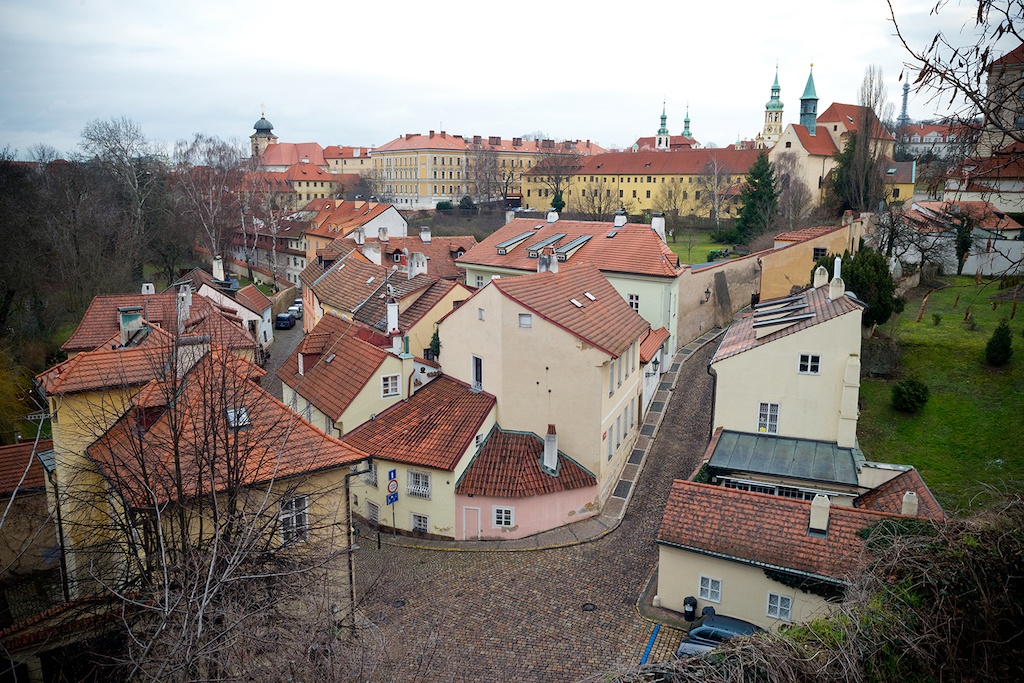
Castle District, or Hradčany, belongs among the most frequently visited parts of Prague, and for a good reason too! The castle is adorned with the breathtaking St. Vitus Cathedral and surrounded by enchanting royal gardens with unforgettable views. It’s impossible not to fall in love with this area – it feels like travelling several centuries back in time. There are things to do and explore for travellers with various interests: galleries, museums, great architecture, churches, monuments, parks, cafés, beer gardens…
With Prague becoming an increasingly popular destination, this part of town can get quite busy during the high season. But even within the tourist district of Hradčany, one can find hidden “islands” that are only known to the locals. You can experience an authentic atmosphere in local parks, discover a cosy café with local pastry, pubs with excellent beer that is less expensive than water, and Czech specialities like pickled sausage (utopenec) or the national dish called “svíčková” that you won’t find anywhere else in the world.
Top things to do in the Castle District
There are many attractions in Prague that bring visitors from all over the world. Travellers usually have limited time, so they want to see as much as possible during their stay in each location. Besides the “must-see” sights, I always try to recommend spots that are popular or known primarily to the locals. It is also a chance to escape the crowds and to absorb the real and authentic local atmosphere.
Nový Svět (New World)
It is easy to visit the Prague Castle. But if you have some extra time, leave the crowds behind and walk through the quiet streets of Nový Svět, a picturesque neighbourhood from the 17th century. If you look carefully, you might spot some of the cannonballs stuck in the walls of certain buildings, a reminder of one of the attempts to invade Prague. Nový Svět used to be the “outskirts” of Prague Castle in the past. Later it became a place where the poorest of the poor would have their small houses and spend their lives. After WWII, this area became popular among artists, especially filmmakers. Have a cup of coffee at one of the local cosy cafés and imagine what life was like in the 16th century during the times of the eccentric emperor Rudolf II.
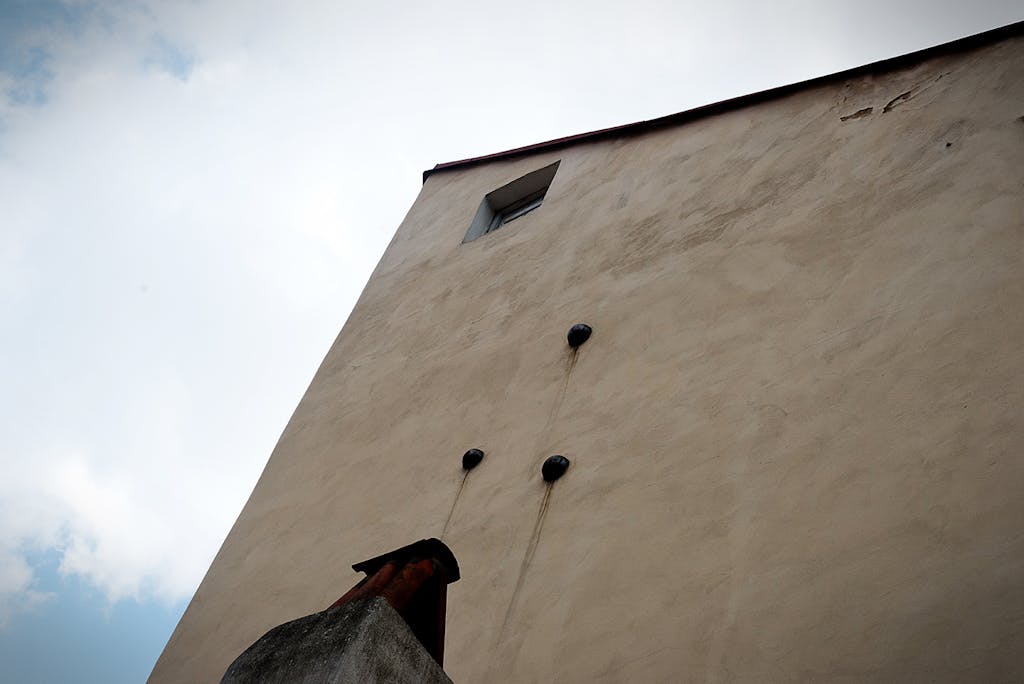
→ Can you spot the cannonballs still attached to the church walls in the Nový Svět neighbourhood?
Statue of Tycho Brahe and Johannes Kepler (tram stop Pohořelec)
The statue can be seen immediately next to the Pohořelec tram stop. Although the statue of both remarkable scientists looks quite ordinary and isn’t even that old, it symbolizes one of the most interesting historical times of Prague. The stories of these men are really fascinating. First of all, the reason why the statue is placed at this spot is connected with the fact that both have lived here in a house that is no longer standing. Another reminder of their activity is the nearby Gymnasium named after Johannes Kepler. Both scientists have been invited to Prague by Rudolph II., obsessed with alchemy and astrology, to conduct their research and observations of planets, especially regarding the orbit of Mars. In addition to this, they were expected to supply not only the members of the court but the Emperor himself with horoscopes, which were then essential for making major decisions. Brahe – a Danish scientist, a great observer with excellent eyesight at a young age suffered a nose injury in a duel. This detail will also help you identify who is who in the sculpture. Brahe is obviously the one with his nose missing. In real life, he was progressive and would be using special glue to keep an artificial nose made of brass attached to his face. For centuries there had been speculations of the actual reason for Brahe’s death. Higher content of gold, quicksilver, and arsenic found in the remains of his body buried in the Týn Church at the Old Town Square suggests he might have been poisoned. Was he in the way of someone’s interests? Was he considered a rival by Kepler? Maybe. It was only the modern science that proved Brahe had actually died of kidney disease, although many questions still remain unanswered.
If you want to learn more about these two, as well as other great thinkers present at Rudolph’s court, join one of our guides on a virtual tour that will reveal all the secrets of alchemy, science, and magic in Prague.
U Černého vola (Loretánské náměstí)
Across the street from the Czernin Palace (Černínský palác, the seat of the Ministry of Foreign Affairs) lies a delightful local pub – U Černého vola. If you find yourself in the vicinity of the Prague Castle, it is definitely worth quenching your thirst here, especially with the popular dark lager. You will not only witness the genuine and traditional Czech-pub atmosphere but at the same time support the music school for the blind next door, which is co-funded by the income of this pub.
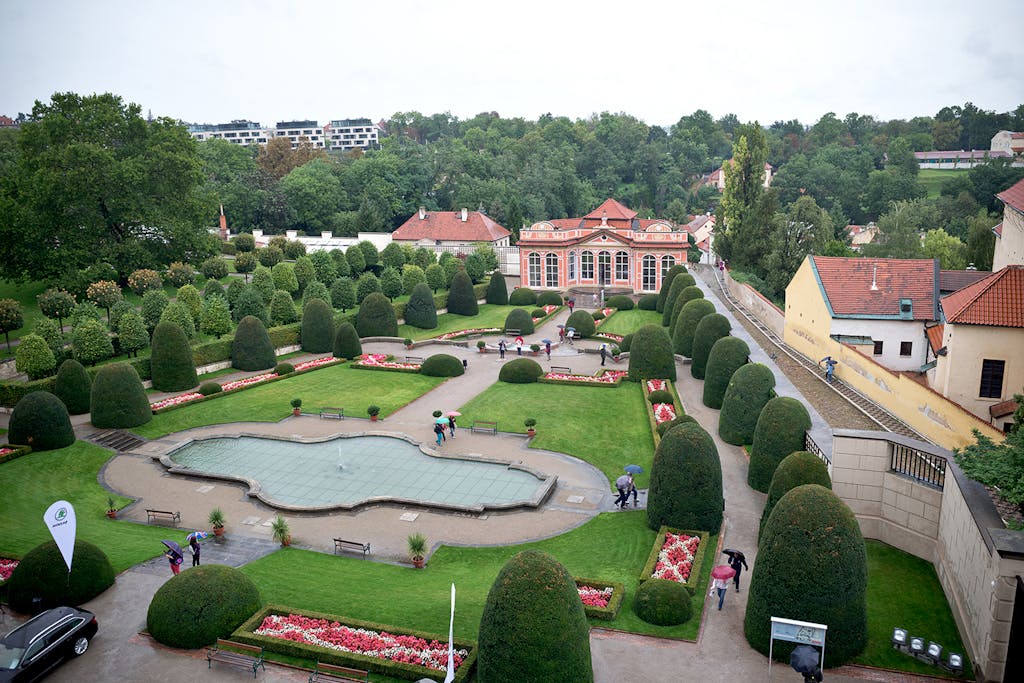
→ U Černého vola lies across the street from the Černín Palace gardens – not always accessible, but amazing if you succeed to get in.
Strahov Monastery (Pohořelec)
After recharging your batteries with beer and the traditional pickled hermelin cheese (nakládaný hermelín), continue to the Strahov Monastery just a few minutes away. Here you can visit the famous historical library. The complex has been established in the 12th century and the local monks have in the past guarded the gate leading to the Castle District. You can still see the remains of that gate and parts of the original fortification. Your reward for making it all the way here will be one of the best views of the Castle and the rest of Prague!
Monastic Brewery Strahov
In case you are exhausted, hungry or thirsty again, there is no need to despair. You are in Prague, so good food and beer are never too far away! There is a craft brewery within the complex of the monastery called Monastic Brewery Strahov, so do check it out. But be careful, as the amber lager or the IPA are strongly addictive, you will most likely order another one and won’t want to leave.
Royal Garden (Prague Castle)
Pay a visit to the beautiful royal garden, which is open to the public from Spring to Fall, and admire the views of the Prague Castle and the St. Vitus Cathedral from a lesser-known angle. From here, the Castle does actually look like a castle. You can see the remains of the original fortification from the times when the enemies were trying to conquer this area. You can also see the Summer Palace of Queen Anne here, for whom the King had this structure built as proof of his love. Unfortunately, the Queen died before the palace was finished. The king was so devastated by the tragedy that he didn’t allow any other woman to enter the palace. Besides the architecture, the garden also became famous for the exotic plants and trees grown on its premises. It happens to be the first location in Europe, where the tulip had been grown, as it originates from Turkey. In the garden, you can also see an abandoned villa, which had been used by the communist presidents as their residence. Until 1989 this garden had therefore been carefully guarded and the public wasn’t allowed to visit it. Fortunately, that no longer applies, so make sure to pay a visit and relax in the shade of the old trees alongside the great views.
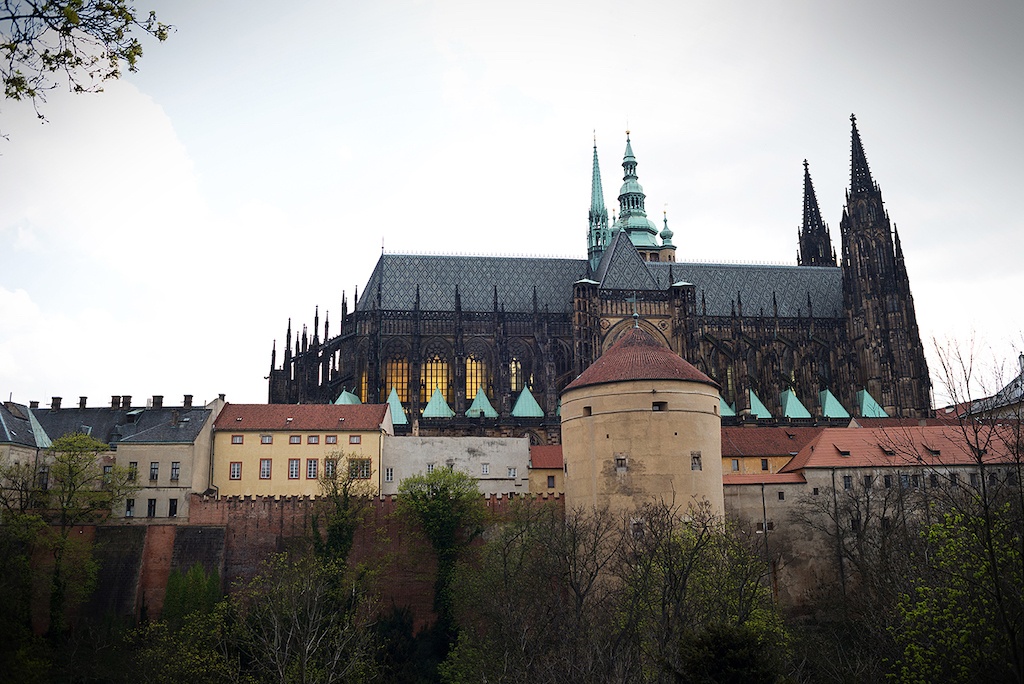
→ The Royal Garden offers a unique view of the St. Vitus Cathedral.
Zikmund Bell (St. Vitus Cathedral, Prague Castle)
The largest bell in the Czech Republic can be seen in the almost 100-meter-high bell tower of the St. Vitus Cathedral. Be prepared to climb a total of 294 steps, but the rewarding magnificent view of Prague is well worth the effort. The construction of the tower begins already at the end of the 14th century, but due to the Hussite Wars and a major fire in 1541, the construction had been put on hold and finished many years later. The weight of the bell is estimated at 16.5 tons. You can hear the bell only on special occasions and anniversaries. Not only creating the bell but also placing it in the tower required extreme skills. According to a legend, all the ropes snapped during the attempts to raise it to the tower. The task was solved by the daughter of Ferdinand I., who braided her hair into a thick rope. Another legend tells that the bell will crack if a big danger is to hit Prague, and this is precisely what happened in 2002 before the biggest flood in the whole history of Bohemia.
Deer Moat (North Side of the Prague Castle)
This is another hidden gem of the Prague Castle complex, that you will appreciate especially on a hot summer day. Today, the moat is no longer used for protection of the Castle against the enemy. Rudolph II. would bring game to the moat for the purpose of hunting – that is also how this part of the complex got its name. Originally there had been a bridge connecting the Castle and the Royal Garden separated by the moat, however, that is no longer the case. The bridge had been replaced by a path. Although the moat seems quite deep, it used to be much deeper when it still served its original purpose. Throughout time, the moat partly filled and trees started growing there that provide large areas of shade. For this reason, the moat remains cool and pleasant even during the summer. It is also a great place to escape the crowds aiming for the Castle and Cathedral. It is a very pleasant walk and along the way, you can admire statues or the architecture of a tunnel connecting the Upper and Lower parts of the moat. There had also been bears kept in the moat in the 20th century, during the presidency of the first Czechoslovak president, T.G.Masaryk. He had been given these bears as a gift from the Czechoslovak soldiers. No need to hide your sandwiches anymore, the bears are no longer there, so you won’t need to run. But you can still enjoy a stroll through an area that not even many locals know about.
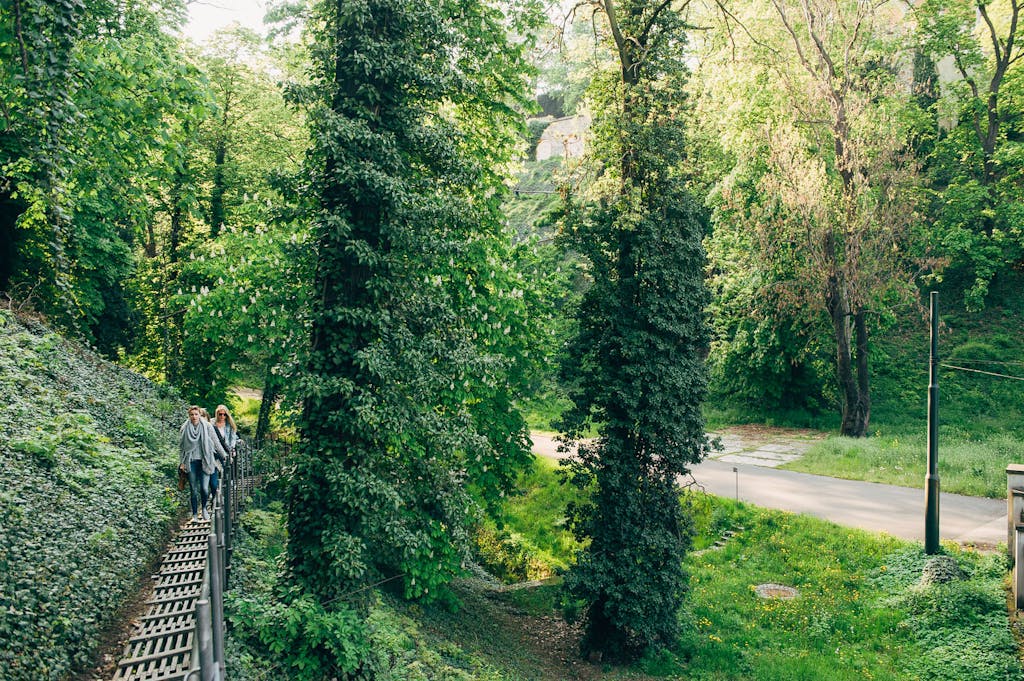
Písecká brána – Písek Gate (K Brusce 5/208, metro station Hradčanská)
Another interesting spot worth a visit when exploring the area around the Castle is the Písek Gate. Up until 1784, the individual districts, such as the Old Town, Lesser Town, New Town, and Castle District, had been fortified as independent towns. Before being united into the single city of Prague, these fortifications have been, with very few exceptions, removed to make space for the city to expand. Písecká brána is one of these exceptions, where we can still see the original fortification built to keep the enemies from intruding. Today, there is a café located within the gate, where various cultural events and exhibitions are held. Also, notice the difference in architectonic style between the surrounding buildings and the remains of the baroque fortification, which is a bit unusual for Prague. The builders were inspired by traditional English architecture.
Dobrá trafika (Újezd 37, tram stop Hellichova)
Although located outside of the Castle District, Dobrá trafika is a great place to sit down and reward yourself with some refreshment after descending from Hradčany to Malá Strana (the Lesser Town). As the Czech title suggests, Dobrá trafika is officially a newsstand/tobacco shop – no, I don’t want to encourage you to inhale tobacco fumes. When you enter the small shop you might wonder, if this is the right place. Trust me – it is! Besides the newspapers, tram tickets, cigars, and postcards offered, you can get a cup of delicious coffee, a glass of wine or beer, of course, as well as some snacks. You just need to continue towards the back of the shop, where you will find two cosy rooms with a bar and as a bonus, there is also a small garden with tables in a courtyard. They have a good variety of teas, but also wine and local beer. If you’re lucky, there might also be a live concert. Prices are very reasonable, so sit back and enjoy. Not bad for just a tobacco shop, eh?
TIP: If you want to get a good start on the Castle District, try our popular Prague City Highlights Tour that will take you through the royal garden to the castle itself. Once there, you can further explore the less-known areas by yourself. Ask your guide for directions, they will be more than happy to help!
June 7, 2021

